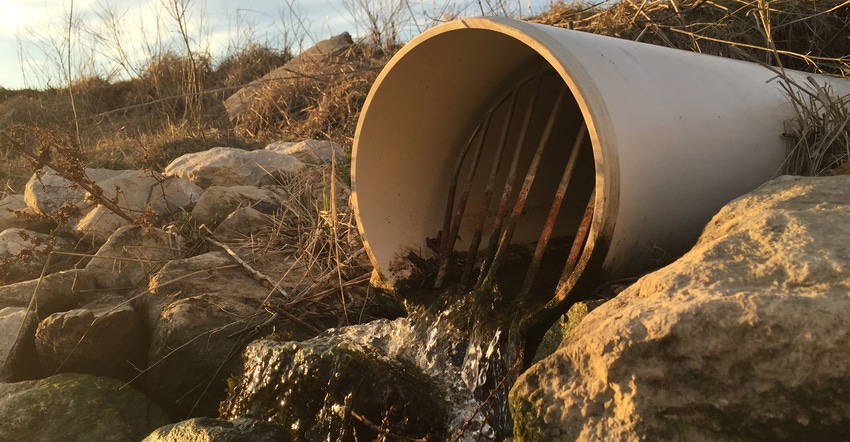
Illinois officials have released their biennial report on the Nutrient Loss Reduction Strategy, and despite farmers’ efforts to plant more cover crops and reduce phosphorus application, nitrate and phosphorus loss rates still increased dramatically.
According to the report, from 2015 to 2019, nitrate loss increased by 13% and phosphorus loss increased by 35%. Blame the weather, say Illinois officials, who say storms and more rainfall increased total water flow by a whopping 25%.
Related: Who cares about conservation in Illinois?
Adopted in 2015, the goals of Illinois’ Nutrient Loss Reduction Strategy are to reduce nitrogen losses by 15% and phosphorus losses by 25% by 2025. The Illinois Department of Agriculture and the Illinois EPA report biennially on NLRS progress and have just released the 2021 report. To meet those goals by 2025, they say everyone will have to pick up the pace.
Coming into 2021, proponents were nervous about what the biennial report would show — especially given its inclusion of the disastrous 2019 crop year. Statewide from 2015 to 2019, water flow in Illinois was 25% greater than the baseline years of 1980 to 1996. Some watersheds even showed a 30% greater water flow, according to Megan Dwyer, IL Corn’s nutrient loss reduction manager.
“How do we address excess water?” she asks. “We can’t control water out of the sky, but we have to find ways to manage it and slow it down.”
The 2021 report shows that nitrate losses were up 13% statewide; phosphorus was up 35%; and total river flow was up 25%. That’s compared to the 1980-96 baseline, which is the line by which nitrate loss should decrease by 15% and phosphorus by 25%. And that’s despite the fact that Illinois farmers also reduced phosphorus application rates in 2019, with 11.2 million acres reported as having less applied compared to 2011.
Even before the report came out, Dwyer acknowledged that while nitrate losses were up, relative to the increased rainfall, it was clear agriculture was doing something right. The 2021 report shows that while nitrate loss was up 13%, water flow was up 25%.
IDOA Director Jerry Costello II agrees: “The report highlights the progress we are making in programs like our cover crop incentive program, Fall Covers for Spring Savings. This program is creating awareness and encouraging Illinois’ farmers to look at methods that will reduce nutrient loss.”
Still, despite the increased losses, there is good news. The report revealed farmers know more about the NLRS and have planted 135% more cover crops since 2011, at 1.4 million acres.
Other figures from the report:
In 2019-20, the ag sector spent $27 million implementing NLRS, beyond government cost-share programs.
Illinois Nutrient Research and Education Council invested $6.9 million for nutrient research and education.
About 72,000 people attended more than 1,020 field days, conferences or workshops to learn about nutrient loss reduction practices.
IDOA’s Partners for Conservation program helped put 93,750 acres under cover crops following 2019 floods.
IDOA’s Fall Covers for Spring Savings program funded 50,000 more acres of cover crops in 2019.
Point source spending around NLRS increased from $65.1 million in 2019 to $185.2 million in 2020.
In 2019 and 2020, Illinois EPA put $200.2 million into projects to improve nutrient removal, green infrastructure, urban stormwater treatment, and control of combined and sanitary sewer overflows.
More than 77% of Illinois’ Municipal Separate Storm Sewer system communities have started street sweeping, and 64% have implemented leaf collecting; leaves represent a significant source of urban phosphorus loads.
Read the full report here: 2021 Biennial NLRS Report.
About the Author(s)
You May Also Like






